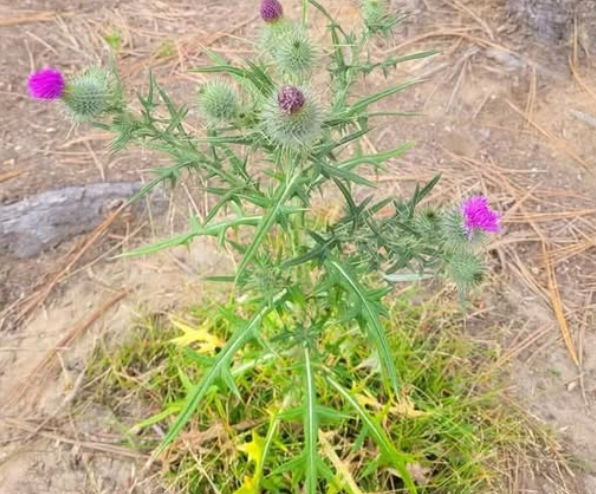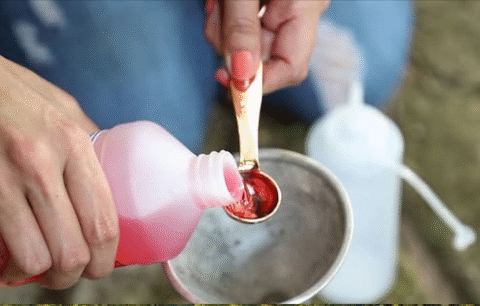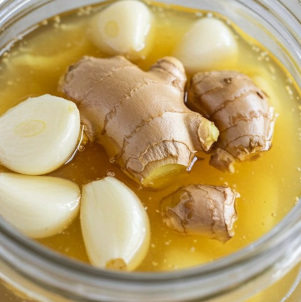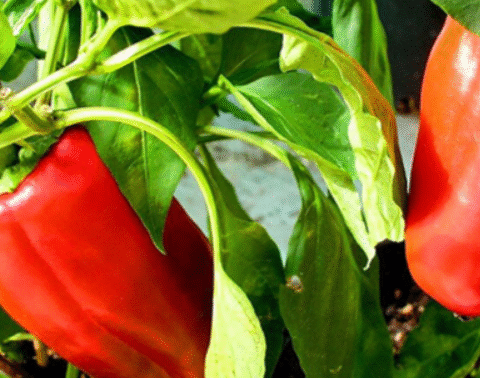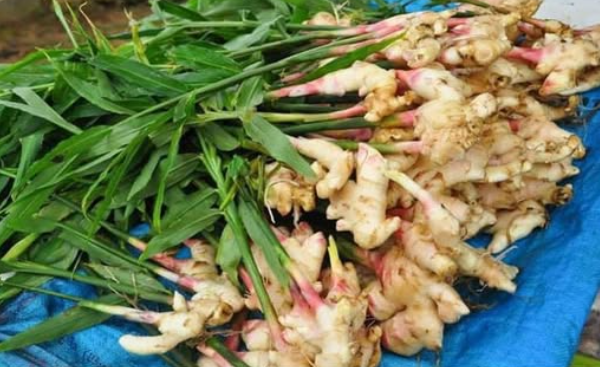The Surprising Benefits of Bull Thistle (Cirsium vulgare): From Weed to Wellness
When most people think of thistles, they often envision prickly, nuisance weeds taking over gardens and pastures. But those sharp spines hide a fascinating story: the bull thistle (Cirsium vulgare) has long been misunderstood. While many gardeners and farmers see it as invasive, this wild plant offers a wealth of benefits—nutritional, medicinal, ecological, and even culinary. In this article, we’ll dive deep into why bull thistle deserves a second look.
What Is Bull Thistle?
Bull thistle (Cirsium vulgare) is a biennial herbaceous plant native to Europe, Asia, and North Africa. Over centuries, it spread to other continents—including North America—where it’s often labeled invasive. Despite its reputation, bull thistle has traditional uses and ecological roles that make it valuable.
- Growth habit: Biennial—forms a basal rosette in its first year, then sends up a tall flowering stem in year two.
- Height: Up to 6 feet tall in its flowering stage.
- Stems: Thick, hairy, and densely covered with sharp spines.
- Leaves: Deeply lobed, dark green, edged with formidable spines.
- Flowers: Purple to pink thistle heads surrounded by spiky bracts.
- Roots: A deep taproot that helps it access moisture and nutrients.
Identifying Bull Thistle vs. Other Thistles
- Bull thistle: Large size (up to 6 ft), biennial lifecycle, single thick spiny stem, rosette year one.
- Canada thistle (Cirsium arvense): Smaller, sprawling perennial with creeping roots—less spiny and more vine‑like spread.
Ecological Importance of Bull Thistle 🌱
Despite its reputation as a weed, bull thistle plays several critical roles in ecosystems:
1. Supports Pollinators
In late summer—when other blooms fade—bull thistle’s nectar‑rich flowers attract pollinators like bees, butterflies, and even hummingbirds. It serves as a vital food source during this lean period.
2. Provides Habitat
The dense, spiny foliage of bull thistle creates sheltered spaces for small birds, insects, and other wildlife. The spines also deter predators, offering a safe refuge.
3. Improves Soil Health
Bull thistle can thrive in disturbed or compacted soils. Its deep taproot breaks up hardpan, improves aeration, and helps water infiltrate. When the plant dies back, it adds organic matter back into the soil, enriching future crops.
Nutritional Benefits of Bull Thistle
Far from being just a prickly nuisance, bull thistle is a nutritional wild green with benefits for health-conscious foragers:
- Vitamins: High in vitamin A (for vision and skin) and vitamin C (for immune function and antioxidant support).
- Fiber: Leaves and stems are rich in dietary fiber, promoting healthy digestion.
- Minerals: Contains calcium, magnesium, potassium—important for bone, muscle, and nerve health.
- Calories: Very low in calories, making it an excellent addition to a weight‑managed diet.
Nutrition Snapshot
| Nutrient | Amount per 100 g (approx.) | Health Benefit |
|---|---|---|
| Vitamin A | ~1,500 IU | Supports vision & skin health |
| Vitamin C | ~20 mg | Boosts immunity & antioxidant defenses |
| Dietary Fiber | ~3–4 g | Supports gut health & digestion |
| Calcium | ~120 mg | Bone & muscle function |
| Magnesium | ~40 mg | Nervous system & energy metabolism |
| Potassium | ~300 mg | Regulates blood pressure & muscle cramps |
Medicinal Uses of Bull Thistle
Traditional herbalists and modern researchers both recognize several medicinal benefits of bull thistle:
Anti-Inflammatory Effects
Compounds in bull thistle can help reduce inflammation, making it useful for conditions such as arthritis or joint pain.
Liver Support & Detox
Antioxidants in bull thistle support liver health by protecting against toxins and oxidative damage. It has been used in folk medicine to aid liver cleansing.
Wound Healing
Crushed leaves have antimicrobial and soothing properties and have been applied topically to minor cuts, scrapes, or burns to speed healing.
Digestive Aid
The high fiber count helps relieve constipation, bloating, and general sluggish digestion.
Immune-Boosting
With its vitamin C content and antioxidant profile, bull thistle may support immune system strength and reduce susceptibility to infections.
Culinary Uses: How to Prepare & Enjoy Bull Thistle
Though seldom found on modern menus, bull thistle has been used for food across centuries, especially in survival cooking and folk cuisines.
Harvesting Tips
- Always wear gloves and protective clothing—those spines are sharp!
- Harvest young rosette leaves (first year) or young second-year shoots before flowering.
- Discard older leaves—they become tough and more spiny.
Preparation Methods
- Boiling or blanching: To soften spines and remove bitterness—then rinse in cold water.
- Sauté: Combine with garlic, olive oil, lemon juice, or herbs for a nutritious side dish.
- Soups or stews: Chop the softened leaves and cook along with vegetables or beans.
- Salads (blanched): Toss into greens for added vitamins and fiber once bitterness has been reduced.
Sample Recipe: Sautéed Bull Thistle Greens
- Pick a handful of young bull thistle leaves (washed and spine‑free).
- Blanch in boiling water for 2‑3 minutes.
- Drain and cool in ice water, then squeeze out excess moisture.
- Sauté minced garlic in olive oil over medium heat.
- Add drained greens, season with salt, pepper, a squeeze of lemon, and cook 2–3 minutes.
- Serve warm as a nutrient‑dense side dish. 🥗
Realistic Health & Safety Tips ⚠️
- Always accurately identify bull thistle—never consume look‑alike species like thistles with milky sap or purple-tinged leaves.
- Wear protective gloves, long sleeves, and eye protection while harvesting.
- Start with small servings to gauge tolerance—some individuals may experience mild gastrointestinal discomfort.
- Consult a healthcare provider before using medicinally—especially for liver conditions or medications.
- Avoid sites treated with herbicides or exposed to pollution (roadsides, farmland spray zones).
Ecological & Practical Applications
Here are ways to appreciate bull thistle beyond eating or healing:
- Leave some plants standing late into winter—the dried seed heads provide food for goldfinches and other small birds.
- Use it as a pioneer plant: let bull thistle help improve compacted soil in derelict areas, then follow up with native wildflowers.
- Harvest responsibly—don’t clear large swaths: leave seedheads to persist for wildlife.
Table: Benefits of Bull Thistle at a Glance
| Category | Notable Benefit | Why It Matters |
|---|---|---|
| Pollinator Support | Nectar-rich late-season blooms | Helps sustain bees & butterflies when flowers are scarce |
| Soil Health | Taproot aerates soil | Improves drainage and supports future plant growth |
| Nutrition | Vitamins A & C, fiber, minerals | Well-rounded nutritional profile |
| Medicinal | Anti-inflammatory, liver support, wound aid | Traditional and emerging research-backed uses |
| Culinary | Edible greens when properly prepared | A wild-food option rich in nutrients |
| Wildlife Habitat | Protective cover and seed source | Supports birds and insects, including nesting sites |
Expert Insights 🧠
Dr. Leila Nour, a botanist and ecologist based in the Mediterranean region, notes: “Although bull thistle is often targeted for removal, its ecological contributions—especially for pollinator populations—are hugely underrated.”
Prof. Mark Benson, a herbal medicine expert from the University of Horticultural Health, adds: “We’ve traditionally ignored bull thistle in favor of milk thistle, but early-phase studies are showing anti-inflammatory and liver-protective compounds in Cirsium vulgare as well.” Their work is helping validate folk uses with scientific evidence.
Common Questions (FAQs about Bull Thistle)
- Can I safely eat bull thistle?
Yes—when properly identified, harvested young, blanched, and prepared. Always wear gloves to remove spines. - How do I distinguish bull thistle from Canada thistle?
Bull thistle is biennial, has a single tall spiny stem, and grows upright. Canada thistle is a perennial, creeping via roots, and much smaller. - Is bull thistle medically studied?
Emerging research supports its anti-inflammatory and liver-benefit claims, though more clinical work is needed. - Where is it safe to harvest bull thistle?
Avoid roadside or chemically-treated areas. Harvest from clean, wild or pesticide‑free zones. - Are there side effects?
Some users may experience mild digestive upset. Skin handling can cause scratches or irritation. - Can bull thistle seed spread harm crops?
Yes—its seeds are wind-dispersed and can colonize open fields. Harvesting responsibly helps control spread. - Does it spread aggressively?
Yes, in disturbed environments. Use controlled removal if it’s in unwanted areas. - How to use leaf topically?
Crush fresh young leaves, apply as a compress to minor wounds. Test for irritation on small skin patch first. - Is it legal to forage?
Foraging is generally allowed on public lands, but check local regulations—some areas restrict wild plant removal. - What recipes can I make?
Blanched sautéed greens, thistle‑infused soups or stews, wild-food salads—all nutritious.
Final Thoughts
Bull thistle is more than a prickly weed—it’s a wild ally with nutritional, medicinal, and ecological power. Whether you’re a gardener curious about native pollinators, a forager seeking new wild foods, or a herbalist interested in traditional plants, bull thistle deserves attention. When harvested respectfully and prepared correctly, it can surprise you with its versatile uses.
Next time you spot those spiny purple blooms, consider looking beyond the thorns. You might just discover nature’s hidden gem.
🌿 Would you like to explore related recipes, or learn how to safely cultivate bull thistle for restoration or wild‑crafting projects? 🌿
